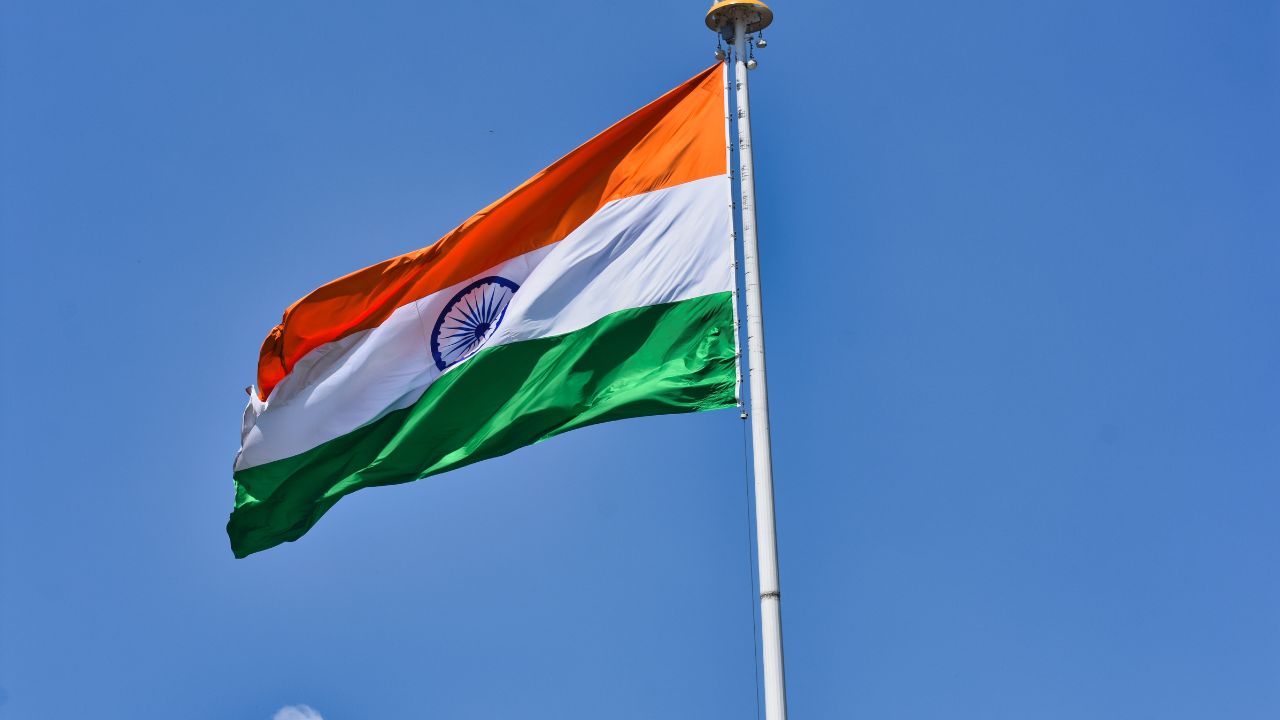India’s Independence Day, placed on the 15th of August every year, is a momentous occasion that holds deep significance for every Indian.
It marks the surrender of a prolonged and arduous battle closer to colonial rule, and the sunrise of a new technology characterized by freedom, democracy, and team spirit.
In the interim serves as an effective reminder of the sacrifices made through limitless people in the pursuit of independence and the values that shape the dominion.
The historical context
The warfare for India’s independence emerges as marked by a long time of resistance, sacrifice, and backbone.
From the early efforts of leaders like Mahatma Gandhi, Jawaharlal Nehru, and Subhas Chandra Bose to the mass moves that galvanized the country, each step taken closer to freedom changed into a testimony to the indomitable spirit of the Indian humans.

The path become not easy, with countless lives misplaced and hardships endured, however, the unwavering resolve of the humans ultimately delivered approximately the momentous day of August 15, 1947.
Commemorating sacrifice and triumph
Independence Day is not the handiest date on the calendar; it is a poignant tribute to the endless sacrifices made by freedom fighters who believed in a destiny of self-governance and prosperity.
The tales of bravery, non-violent resistance, and harmony hold to inspire generations.
The birthday celebration of Independence Day includes reminiscent of these heroes via ceremonies, speeches, and cultural sports that showcase the wealthy tapestry of India’s information and diversity.
Concord in range
India’s electricity lies in its range, a function this is on the coronary heart of its identification. Independence Day serves as a reminder of the cohesion that binds the kingdom together, transcending linguistic, cultural, and religious variations.
The tricolor flag flying excessively represents the mixing of various states, languages, and cultures right into a single entity, celebrating the idea of “harmony in range.”
Renewing dedication to democracy
Beyond being a celebration, Independence Day is a possibility for every Indian to reflect on the standards that guide the state.
Democracy, liberty, equality, and justice form the bedrock of India’s identification and at the present time serve as a reminder of the continuing dedication to upholding those values.
The Indian Constitution, a brilliant film that ensures essential rights and freedoms, is a testament to the U.S.A.’s willpower to develop an in-reality and inclusive society.
Fostering patriotism and countrywide pleasure
Independence Day ignites an experience of patriotism and countrywide pride in the hearts of Indians across the globe.
The unfurling of the country-wide flag, the singing of the country-wide anthem, and the collective sense of belonging evoke a deep emotional connection to the United States of America.
These sentiments foster a shared dedication to the USA’s progress, encouraging residents to make a contribution undoubtedly to its development.
Looking beforehand
As India celebrates a few other independence days, it is important to reflect on the progress made because of gaining freedom and the challenges that lie ahead.
Financial growth, technological enhancements, and social reforms have transformed the kingdom; however, there are nonetheless hurdles to overcome, along with poverty, inequality, and environmental concerns.
The spirit of Independence Day serves as a reminder that the adventure in the direction of a better India is ongoing and requires the participation of each citizen.
The Role of Mahatma Gandhi on Indian Independence
Mahatma Gandhi often referred to as the “father of the state,” executed a crucial and transformative position in India’s war for independence.

His philosophy of nonviolent resistance, and civil disobedience, and his unwavering determination for justice and equality made him a symbol of want, inspiration, and trade in the course of a pivotal period in Indian records.
Gandhi’s contributions to India’s Independence Day are immeasurable and can be summarized within the following approaches:
- Champaran non-violent resistance: Gandhi’s philosophy of nonviolent resistance, moreover called Satyagraha, became the cornerstone of the Indian independence motion.
He believed that passive resistance, rooted in reality and ethical courage, modified right into a powerful device in the direction of oppressive forces.
With the useful resource of advocating for nonviolent protests, moves, and boycotts, he showed that a state’s strength must lie in solidarity and disciplined movement.
- Mobilizing the masses: Gandhi’s capability to mobilize and impress the masses modified into remarkable.
He advocated for human beings from all walks of life to join the liberty movement, transcending obstacles of caste, creed, and sophistication.
Via his management, tens of millions of Indians participated in various acts of civil disobedience, moves, and protests, efficiently challenging British rule.
- Salt march and civil disobedience: one every of Gandhi’s maximum iconic moves became the salt march (Dandi march) in 1930.
This symbolic act of defiance toward the British salt tax now not quality highlighted the unjust recommendations but moreover showed the strength of non-violent resistance.
This occasion marked a turning aspect in India’s war for independence, gaining international hobby and bolstering the Indian hundreds’ strength of mind.
- Negotiating for independence: Gandhi changed into now not the handiest a mobilize but moreover a negotiator.
He engaged in dialogues and negotiations with the British government, representing the Indian countrywide congress.
His efforts delivered agreements that contributed to the eventual transfer of energy.
- Uniting a divided us of a: Gandhi’s commitment to communal concord and group spirit become critical in a time at the same time as non-secular tensions have been immoderate.
He strived to bridge the distance between Hindus and Muslims, and his thoughts of non-violence and tolerance helped keep a united front in competition with the British colonial regime.
- Embodying sacrifice: Gandhi’s personal sacrifices, which incorporate long durations of imprisonment and his willingness to undergo struggle for the sake of the state, inspired thousands and lots.
His ascetic lifestyle and humility set an example of selflessness and company that resonated with Indians.
- International popularity and help: Gandhi’s philosophy of nonviolence earned him global admiration and assistance.
He turned the Indian independence motion right into a moral reason that transcended borders, making it tough for the British to disregard or suppress.
- Legacy of values: beyond achieving independence, Gandhi’s legacy maintains to encourage movements for justice, civil rights, and equality worldwide. His teachings stay relevant as a version of non-violent resistance and the pursuit of social justice.
In précis, Mahatma Gandhi’s function in India’s struggle for independence grows to be transformative.
He gave voice to the aspirations of thousands and heaps, led by example, and ignited a spirit of nonviolent resistance that in the end paved the way for India to acquire its freedom on August 15, 1947.
His legacy lives on in India’s Independence Day celebrations as a reminder of the power of concord, resilience, and ethical braveness.
The way Forward
India’s independence day is extra than handiest a rustic huge holiday; it’s far a time to recall, honor, and have fun with the sacrifices of folks who fought for freedom and to reaffirm the determination to the values that form the nation.
It is a day to mirror the development made, the challenges that stay, and the harmony that binds the various tapestry of India together.
The fact the tricolor flag unfurls and the country-wide anthem resounds, permits us to stand united in our determination to construct a wealthy, inclusive, and democratic India for generations to go back.
If you want to know more about India’s Independence then must read the book of India’s Struggle for Independence which has been written by Bipan Chandra.
India’s struggle for independence, through Bipan Chandra
Unveiling India’s war for independence: Insights from Bipan Chandra

The records of India’s conflict for independence are a tapestry woven with the efforts of several luminaries who devoted their lives to the cause.
Amongst these stalwarts, Bipan Chandra stands as a resolute pillar of notion. Thru his unwavering determination and passionate advocacy for India’s liberation, Buddy’s contributions have left an indelible mark on the annals of records.
In this blog post, we delve into his tremendous journey and discover the significance of his paintings inside the context of India’s war for independence.
Preferred quote: “Bombs and pistols do now not make a revolution. The sword of revolution is sharpened at the whetting-stone of thoughts.”
The eBook in one sentence: Bipan Chandra’s writings, encapsulated in his influential works together with “the soul of India,” offer profound insights into the socio-political panorama of colonial India and advise for a revolution based on intellectual awakening.
Why do need to you study it? Bipan Chandra’s friend’s writings deeply rooted in his unwavering belief in India’s cultural and non-secular records provide a completely unique perspective on the warfare for independence.
In a generation marked by fervent calls for radical movement, Buddy’s emphasis on the energy of mind, intellectual rejuvenation, and the importance of cultural delight sets him apart.
With the useful resource of reading his works, readers gain a nuanced knowledge of the multifaceted nature of the independence motion and the critical position of ideology in shaping its path.
Key takeaways:
- Intellectual revolution: Bipan Chandra’s mind emphasizes the need for a highbrow revolution because of of the bedrock of any great exchange.
He believed that a society’s improvement is pushed via the use of the energy of thought and the dissemination of know-how.
Readers will find out the transformative functionality of training and thoughts in riding social and political alternate.
- Cultural identity: Buddy’s works highlight the importance of maintaining and celebrating India’s cultural identification in the face of colonial subjugation.
Via using reconnecting with the U.S.’s rich heritage, he recommended a collective revel in of satisfaction that might be characteristic of a rallying point for the hundreds.
Readers will find out about the position of cultural consciousness in fostering a sense of harmony and purpose.
- Religious awakening: at the heart of Buddy’s philosophy was a deep-rooted belief in spirituality as a catalyst for social transformation.
His writings underscore the interconnectedness of spirituality, ethics, and societal progress.
Readers will advantage of insights into how spiritual enlightenment can inspire an experience of responsibility and obligation in the direction of the kingdom.
- Peaceful resistance: Bipan Chandra’s advocacy for non-violent resistance as a technique of engaging in independence offers a compelling alternative to greater militant tactics.
His thoughts encourage readers to reflect on the electricity of nonviolent techniques in effecting trade and transforming societies.
- Legacy of thought: Bipan Chandra’s legacy maintains to inspire generations, underscoring the enduring effect of his thoughts on India’s conflict for independence.
Readers will find out the timeless relevance of his philosophy in contemporary-day moves for justice, equality, and exchange.
Bipan Chandra’s friend’s intellectual prowess, cultural delight, and advocacy for peaceful exchange have left an indelible imprint on India’s journey to independence.
His writings stand as a beacon of understanding and steerage for the ones attempting to find to recognize the complexities of the independence motion and the transformative power of the mind.
Thru exploring Buddy’s artwork, readers embark on a journey of intellectual enlightenment, cultural reawakening, and a deeper appreciation for the iconic spirit of India’s battle for freedom.
See the Price of the Book on Amazon
Must Read it also:










